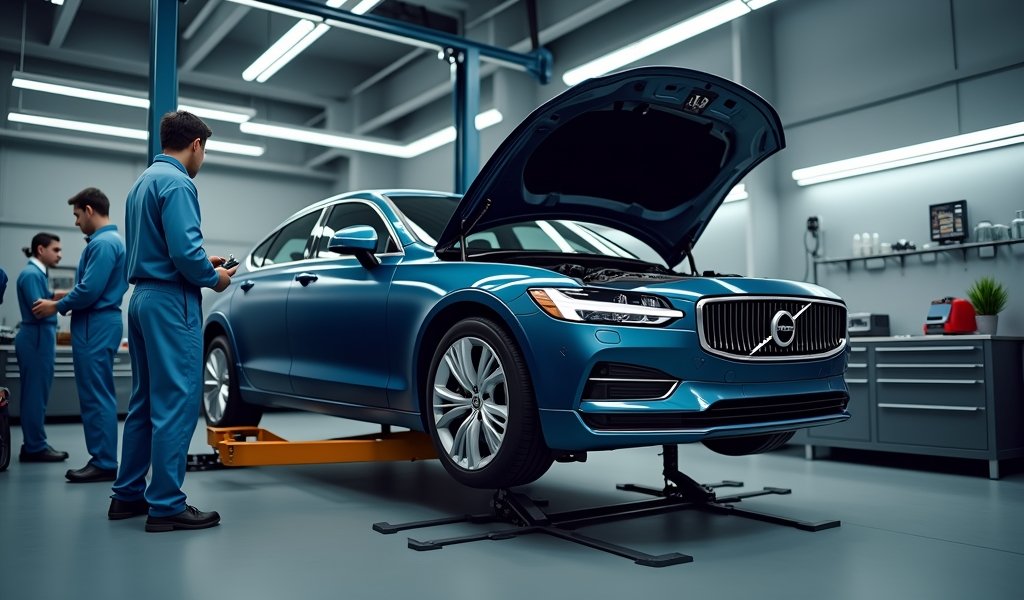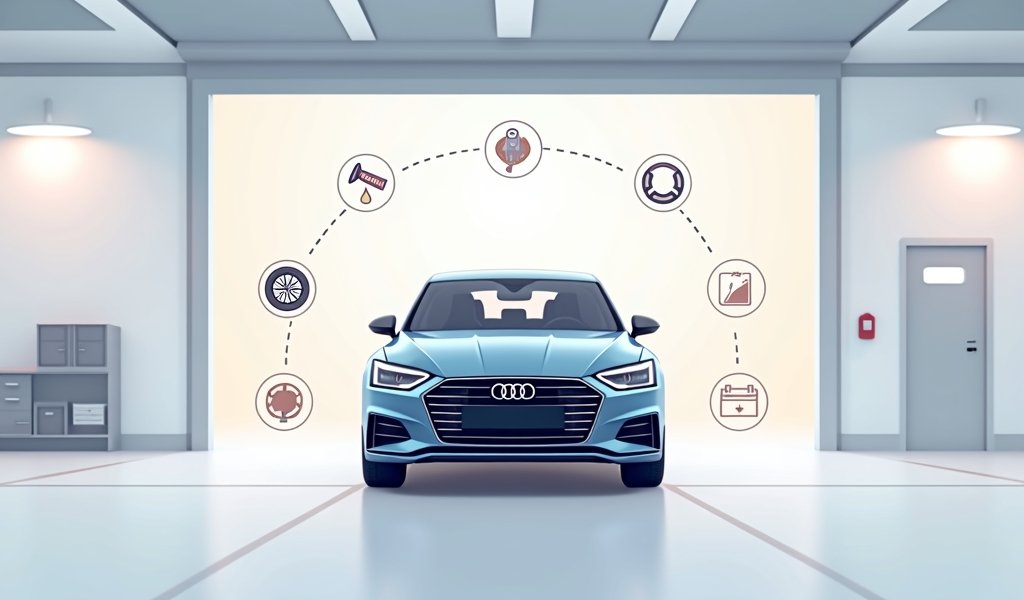Overview
This article identifies seven critical warning signs that indicate your vehicle needs servicing: unusual engine noises, dashboard warning lights, fluid leaks, brake issues, tire wear patterns, battery/electrical problems, and decreased fuel efficiency. Recognizing these signals early allows for inexpensive preventative maintenance rather than costly major repairs, potentially saving thousands of dollars while extending your vehicle’s lifespan to 200,000-300,000 miles.
Table of Contents
- Understanding Your Car’s Signals
- 1. Unusual Engine Noises
- 2. Warning Lights on Dashboard
- 3. Fluid Leaks
- 4. Brake System Issues
- 5. Tire Wear and Pressure
- 6. Battery and Electrical Problems
- 7. Decreased Fuel Efficiency
- The Value of Preventative Maintenance
- Take Action Today
- Conclusion
- Frequently Asked Questions
Understanding Your Car’s Signals
Your vehicle speaks its own language. Those mysterious clicks, clunks, and dashboard lights aren’t random—they’re your car’s way of saying, “Hey, I need some attention!” After 25 years as a master technician, I’ve learned that recognizing these signs your car needs service isn’t just about preventing breakdowns; it’s about saving thousands in avoidable repairs.
Modern vehicles are sophisticated machines with hundreds of components working in harmony. When that harmony gets disrupted, your car will let you know—if you’re listening. Think of these signals as your car’s version of a sneeze or a fever. Catch them early, and the treatment is usually simple and affordable.
In this guide, I’ll walk you through the seven most common warning signs that mechanics like me look for. You don’t need specialized training to spot these indicators—just a bit of awareness during your daily drives. By becoming more tuned in to your vehicle’s needs, you’ll develop a practical car inspection checklist that can help extend your vehicle’s life by years.
1. Unusual Engine Noises
A healthy engine has a consistent, smooth sound that most owners recognize intuitively. When that sound changes, it’s time to pay attention. Different noises indicate specific problems, and recognizing them can help you describe the issue accurately when seeking help.
Knocking or pinging sounds—especially ones that increase with engine speed—often indicate problems with engine bearings or improper fuel combustion. Left unchecked, these issues can lead to catastrophic engine failure. A repair that might cost $300 today could become a $3,000 engine replacement if ignored.
Squealing noises typically come from belt issues. The serpentine belt drives multiple systems, and a high-pitched squeal, particularly when starting your car or during turns, suggests it’s loose or worn. This $20-50 part prevents much costlier cooling system failures.
Grinding sounds when shifting gears almost always point to transmission troubles. This is never a “wait and see” situation—transmission repairs become exponentially more expensive with delay. According to Consumer Reports’ automotive experts, unusual noises should be addressed within two weeks of first notice.

2. Warning Lights on Dashboard
Those glowing symbols on your dashboard aren’t just festive decorations—they’re sophisticated diagnostic alerts. Modern vehicles contain dozens of sensors constantly monitoring everything from engine performance to emissions systems.
The check engine light is the most misunderstood indicator. While it doesn’t always signal an emergency, it should never be ignored. It might indicate something as simple as a loose gas cap or as serious as a failing catalytic converter. Either way, it’s telling you that your engine’s emissions control system has detected an issue that’s likely affecting performance and fuel efficiency.
Warning lights that demand immediate attention include:
- Oil pressure light (typically shaped like an oil can): Pull over immediately—driving even a short distance can cause catastrophic engine damage
- Temperature warning light: Your engine is overheating, which can crack cylinder heads or blow gaskets
- Brake warning light: Indicates either a brake fluid issue or worn brake pads
- Battery/charging light: Your electrical system isn’t generating sufficient power
Many drivers assume warning lights will eventually go off on their own. They rarely do. Each illuminated symbol represents a specific system that needs attention, and following a car service checklist that includes regular diagnostic checks can catch these issues before they trigger dashboard alerts.
3. Fluid Leaks
Finding mysterious puddles under your parked car is never a good sign. Your vehicle relies on six critical fluids to operate properly, and leaks indicate compromised systems.
The location of the leak often tells you which system is affected. Spots near the front typically indicate engine oil, coolant, or power steering fluid. Leaks near the center might be transmission fluid, while spots under the rear could be differential fluid or even fuel.
Color provides important clues:
- Clear to light brown (and slippery): Brake fluid – requires immediate attention as it affects stopping ability
- Red or pink: Transmission fluid or power steering fluid
- Green, orange, or yellow: Coolant/antifreeze – often has a sweet smell
- Dark brown to black: Engine oil
- Clear water: Normal condensation from A/C (the only “okay” leak)
A simple diagnostic trick I teach all my customers: Place cardboard under your parked car overnight, then note the location and color of any spots in the morning. This gives us valuable information before you even come into the shop.
The Institute for Automotive Service Excellence notes that fluid leaks account for nearly 36% of severe engine damage cases—damage that proper maintenance could have prevented. Most fluid leaks start small and worsen gradually, giving attentive owners plenty of time to address them before serious damage occurs.
4. Brake System Issues
Your brake system isn’t just another car component—it’s your primary safety system. When it talks, listen carefully. Effective brakes should feel firm and responsive, bringing your vehicle to a smooth, controlled stop without unusual sounds or sensations.
Warning signs of brake problems include:
- Squealing or squeaking: Usually indicates worn brake pads (the sacrificial wearing surface)
- Grinding metal sounds: Pads are completely worn, causing metal-on-metal contact that damages rotors
- Soft, spongy pedal feel: Potential air in brake lines or fluid issues
- Vibration during braking: Often caused by warped rotors
- Vehicle pulling to one side when braking: Can indicate a stuck caliper or uneven brake wear
The progression of brake wear is predictable, which is why manufacturers build in warning indicators. That high-pitched squeal is intentionally designed to alert you before damage occurs. Ignore it, and you’ll soon hear the grinding that indicates you’ve moved from a $150 pad replacement to a $500+ repair involving rotors and possibly calipers.
Brake fluid should be amber and clear. If yours looks dark or murky, it’s absorbed moisture and needs replacement. The National Highway Traffic Safety Administration recommends checking brake fluid levels at least twice yearly, as low levels can indicate either leaks or worn pads.
5. Tire Wear and Pressure
Your tires reveal more about your vehicle’s health than almost any other component. They’re the only parts touching the road, and their wear patterns can diagnose alignment, suspension, and even driving habit issues.
Uneven tire wear speaks volumes. Wear concentrated on both outer edges indicates chronic underinflation, while center-only wear suggests overinflation. One-sided wear often points to alignment problems or worn suspension components. These patterns develop gradually, giving you plenty of time to correct the underlying issue before replacing tires prematurely.
Proper inflation isn’t just about tire longevity—it directly impacts safety and fuel economy. Every 10% decrease in tire pressure reduces fuel economy by approximately 1% while increasing tread wear by 15%. That adds up quickly at today’s gas prices.
Check your tire pressure monthly and before long trips. The correct pressure is listed in your owner’s manual or on the driver’s door jamb—not on the tire itself (that’s the maximum pressure, not the recommended one). Modern tire pressure monitoring systems alert you when pressure drops significantly, but they’re not sensitive enough to detect gradual underinflation.
The classic penny test still works: Insert a penny into your tire tread with Lincoln’s head upside down. If you can see all of Lincoln’s head, your tread depth is below 2/32 inch, and it’s time for new tires. For winter driving, the complete car service guide I recommend suggests replacing tires when tread reaches 4/32 inch for better snow traction.

6. Battery and Electrical Problems
Battery issues have a frustrating habit of appearing suddenly, but the warning signs are there if you know what to look for. Your vehicle’s electrical system is an interconnected network where problems in one area often manifest elsewhere.
The most common battery warning signs include:
- Slow engine cranking when starting
- Headlights that dim when idling or at low speeds
- Electronic features behaving erratically
- Battery warning light appearing intermittently
- Frequent need for jump starts
Most automotive batteries last 3-5 years, but extreme temperatures dramatically affect their lifespan. In hot climates like Arizona, a battery might last only 2-3 years, while cold climates stress batteries during winter starts.
Beyond the battery itself, electrical problems often show up as flickering lights, inoperative accessories, blown fuses, or even strange computerized system behavior. Modern vehicles rely on delicate electronic control units that require stable power. When voltage fluctuates, these systems can behave unpredictably.
A simple voltmeter test can reveal much about your electrical system’s health. At rest, your battery should show around 12.6 volts. With the engine running, this should rise to 13.7-14.7 volts—a reading outside this range suggests alternator issues. Many auto parts stores offer free battery testing, which I recommend annually after your battery reaches 2 years of age.
According to the American Automobile Association (AAA), battery failures remain one of the top reasons for roadside assistance calls, particularly during seasonal temperature changes.
7. Decreased Fuel Efficiency
Your gas mileage isn’t just about your wallet—it’s one of the most reliable indicators of your vehicle’s overall health. When fuel efficiency drops, something’s affecting your engine’s ability to convert fuel into energy effectively.
A sudden drop of more than 10% in gas mileage warrants attention. Common causes include:
- Dirty air filters restricting airflow (can reduce efficiency by up to 10%)
- Malfunctioning oxygen sensors affecting fuel mixture (potential 40% efficiency drop)
- Underinflated tires increasing rolling resistance
- Dragging brakes creating constant friction
- Spark plug issues affecting combustion quality
- Fuel injector clogs disrupting spray patterns
The simplest way to track fuel efficiency is to reset your trip odometer at each fill-up and divide miles driven by gallons purchased. Do this consistently, and you’ll establish your vehicle’s normal pattern, making deviations obvious.
Seasonal changes affect fuel economy—winter gas formulations and cold temperatures can reduce efficiency by 15-20%—but these changes should be consistent year to year. It’s the unexpected drops that signal problems.
Simple maintenance like regular air filter changes can improve fuel economy significantly. Think of your engine as an athlete that needs to breathe freely for peak performance. A clogged air filter is like running a marathon while breathing through a straw.
The Value of Preventative Maintenance
The economics of car ownership comes down to a simple truth: prevention costs pennies compared to repairs. Following manufacturer-recommended maintenance intervals isn’t just about keeping warranties valid—it’s about addressing issues when they’re minor and inexpensive.
Consider these cost comparisons:
- Regular oil changes ($45-75) vs. Engine replacement ($4,000-10,000)
- Timing belt replacement at recommended intervals ($500-900) vs. Engine damage from belt failure ($2,500-5,000)
- Brake pad replacement when wear indicators activate ($150-300) vs. Replacing damaged rotors and calipers ($500-1,200)
- Replacing a failing water pump proactively ($300-500) vs. Overheated engine repairs ($1,500-4,000)
The average cost of preventative maintenance runs about $800-1,000 annually for most vehicles—roughly $19-25 per week. Compare that to the average major repair cost of $3,500, and the math becomes compelling.
Modern vehicles can easily reach 200,000-300,000 miles with proper maintenance. The key is consistency. Even if you can’t follow every recommendation, prioritizing the essentials—oil changes, filter replacements, fluid checks, and tire maintenance—dramatically improves your vehicle’s longevity prospects.
Take Action Today
Developing a proactive relationship with your vehicle doesn’t require mechanical expertise—just attention and consistency. Start by establishing these simple habits:
- Monthly checks: Walk around your vehicle looking for leaks, check tire pressure and tread, and ensure all lights work properly
- Dashboard awareness: Make a habit of glancing at your gauge cluster when starting your car to ensure no warning lights remain illuminated
- Sound sensitivity: Turn down the radio occasionally while driving to listen for unusual noises
- Maintenance tracking: Keep a simple log of service dates, or use one of many available smartphone apps designed for this purpose
When you do notice signs your car needs service, don’t delay. Small issues rarely resolve themselves and almost always grow more serious—and expensive—with time and mileage.
If you’re uncertain about a particular symptom or want professional confirmation, most reputable shops offer courtesy inspections. At Knows Your Car, we believe informed owners make better decisions, which is why we prioritize education alongside quality repairs.
Remember that modern vehicles keep detailed records in their onboard computers. Even if a problem seems intermittent or resolves temporarily, that data remains accessible to diagnostic equipment. This allows technicians to address issues even when they’re not actively occurring during your visit.
Conclusion
Your vehicle constantly communicates its needs through sounds, sensations, visual cues, and performance changes. Learning to recognize these signs your car needs service transforms you from a passive passenger to an active partner in your vehicle’s longevity.
The seven essential checks we’ve explored—unusual noises, warning lights, fluid leaks, brake issues, tire wear, battery problems, and fuel efficiency—form a comprehensive early warning system. By staying alert to these signals, you’ll catch small problems before they become major headaches.
Remember that every vehicle is unique, with its own quirks and patterns. What’s “normal” for your car might be different from someone else’s identical model. This personalized awareness is why the relationship between car and owner is so special—and so valuable for preventing unnecessary repairs.
At Knows Your Car, we’ve seen countless examples where attentive owners saved thousands in repair costs simply by addressing minor issues promptly. Your vehicle is designed to serve you reliably for many years, and with proper attention to these warning signs, it absolutely will.
Have questions about a specific signal your car is sending? Contact us at (555) 123-4567 or visit knowsyourcar.com to schedule a comprehensive inspection. Your car is trying to tell you something—we’re here to help you understand exactly what it needs.
Frequently Asked Questions
How often should I check my car for potential service needs?
Perform a basic visual inspection monthly and be attentive to changes in performance daily. Seasonal checks (4 times yearly) should be more thorough, including fluids, belts, and battery testing.
What’s the most dangerous warning light to ignore?
The oil pressure warning light requires immediate attention—pull over and shut off the engine. Driving even a short distance with this light on can cause catastrophic engine damage.
Can I still drive with the check engine light on?
A steady (non-flashing) check engine light typically allows for safe driving to a service facility. A flashing check engine light indicates a severe problem that could damage your catalytic converter—minimize driving until diagnosed.
What’s the simplest way to prevent major car repairs?
Regular oil changes according to manufacturer specifications prevent more engine damage than any other maintenance item. Fresh oil is cheaper than a new engine.
How do I know if strange noises warrant immediate attention?
Any noise that affects safety systems (brakes, steering) requires immediate attention. For other systems, noises that change with vehicle speed or temperature are typically more urgent than constant noises.

